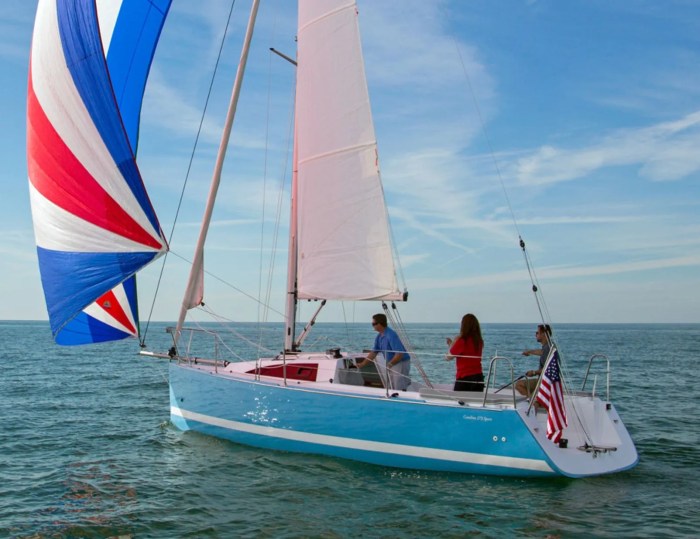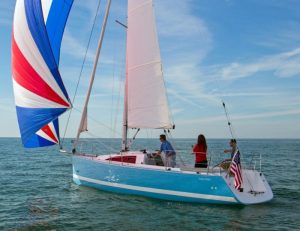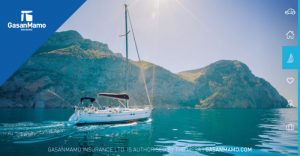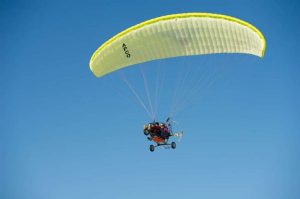
Get ready to set sail on a thrilling journey with Sailing and island-hopping adventures leading the way. Let’s dive into the crystal-clear waters of excitement and discovery as we uncover the wonders of exploring islands by boat.
Whether you’re a seasoned sailor or a newbie to the nautical world, this adventure promises endless horizons and boundless possibilities. So hoist the anchor and let the winds of wanderlust guide you through a sea of unforgettable experiences!
Sailing and Island-Hopping Adventures
Sailing and island-hopping adventures offer a unique and thrilling way to explore different destinations, combining the freedom of sailing with the beauty of discovering new islands and coastal areas.
Popular Destinations for Sailing and Island-Hopping
- The Greek Islands: With their crystal-clear waters and picturesque villages, the Greek Islands are a favorite destination for sailing enthusiasts.
- The Caribbean: Known for its stunning beaches and vibrant marine life, the Caribbean offers plenty of island-hopping opportunities.
- Croatia: The Adriatic Sea in Croatia is dotted with beautiful islands and historic towns, making it a popular choice for sailing and island-hopping.
Benefits of Combining Sailing with Island-Hopping Trips
- Flexibility: Sailing allows you to explore remote and hidden gems that are not accessible by land.
- Scenic Views: Island-hopping offers breathtaking views of coastlines, beaches, and sunsets from the water.
- Cultural Immersion: Visiting different islands allows you to experience diverse cultures, cuisines, and traditions.
Types of Boats Ideal for Island-Hopping Adventures
- Catamarans: Known for their stability and spaciousness, catamarans are popular for island-hopping due to their shallow draft.
- Sailboats: Traditional sailboats provide a classic sailing experience ideal for exploring islands and coastal areas at a leisurely pace.
- Motor Yachts: For those looking for speed and luxury, motor yachts offer comfortable accommodations and the ability to cover more ground during island-hopping trips.
Cycling & Bikepacking Travel

Cycling and bikepacking are both exciting ways to explore new destinations, but they differ in terms of gear, style, and overall experience.
Difference between Cycling and Bikepacking Travel
When it comes to cycling, it typically involves riding on paved roads or designated bike paths using a road or mountain bike. On the other hand, bikepacking combines cycling with elements of backpacking, as it often entails riding on a variety of terrains, including off-road trails and gravel paths, while carrying all necessary gear and supplies on the bike.
Tips for Planning a Bikepacking Trip
- Research the route and terrain to ensure your bike is suitable for the journey.
- Pack light and efficiently to minimize weight and maximize mobility.
- Invest in quality bikepacking bags and gear to secure your belongings during the ride.
- Plan your meals and water refills strategically along the route.
Benefits of Exploring Destinations on a Bike
- Experience a deeper connection with nature and surroundings compared to traditional modes of transportation.
- Improve physical fitness and stamina through regular cycling and bikepacking adventures.
- Flexibility to explore remote areas and off-the-beaten-path destinations that may not be accessible by car.
- Cost-effective way to travel without the need for fuel or public transportation fees.
Essential Gear Needed for a Cycling or Bikepacking Adventure
- A reliable bike that is suitable for the terrain you will be riding on.
- Bike repair kit with tools, spare tubes, and a pump for on-the-go maintenance.
- Comfortable and durable cycling clothing, including padded shorts and moisture-wicking jerseys.
- Bikepacking bags and accessories, such as frame bags, saddle packs, and handlebar rolls for storing gear.
- Helmet, gloves, sunglasses, and sunscreen to protect yourself from the elements.
Road Trips & Van Life Travel

Road trips and van life travel offer unique experiences for exploring the world on wheels. While road trips typically involve driving in a personal vehicle or rental car and staying at various accommodations along the way, van life travel entails living in a converted van and traveling to different destinations for an extended period.
Comparison of Road Trips and Van Life Travel
- Road trips allow more flexibility in terms of accommodations and itinerary, while van life travel provides a sense of freedom and self-sufficiency.
- Van life travel can be more cost-effective in the long run, as accommodation expenses are reduced, but road trips may offer more comfort and convenience.
- Road trips usually involve shorter stays at each destination, while van life travel allows for a more immersive experience in each location.
Must-Visit Road Trip Destinations Around the World
- The Pacific Coast Highway in California, USA, offers stunning coastal views and picturesque towns along the way.
- The Great Ocean Road in Australia showcases breathtaking ocean vistas and lush rainforests.
- The Ring Road in Iceland takes you on a journey through volcanic landscapes, waterfalls, and geothermal hot springs.
Pros and Cons of Living the Van Life While Traveling
- Pros:
- Freedom to travel at your own pace.
- Closer connection to nature and the outdoors.
- Cost-effective accommodation option.
- Cons:
- Limited space and amenities compared to traditional accommodations.
- Challenges with finding suitable parking and facilities for van living.
- Requires maintenance and upkeep of the vehicle.
Converting a Van into a Living Space for Travel
To convert a van into a comfortable living space for travel, you can consider the following:
- Insulating the van to regulate temperature and soundproofing.
- Installing a bed platform or foldable bed for sleeping quarters.
- Adding storage solutions such as cabinets and shelves for organization.
- Incorporating a kitchenette with a portable stove, sink, and refrigerator.
- Setting up a power source for lighting, charging devices, and running appliances.
Rock Climbing Travel
Rock climbing travel offers a unique blend of adrenaline, physical challenge, and awe-inspiring natural landscapes. Whether scaling towering cliffs or navigating intricate rock formations, rock climbing travel provides a thrilling experience for adventure enthusiasts.
Famous Rock Climbing Destinations Globally
- Yosemite National Park, USA: Known for its iconic granite walls and challenging routes.
- Mount Arapiles, Australia: Offers a wide range of climbing styles and stunning views.
- Kalymnos, Greece: A limestone paradise with a diverse range of climbing routes.
- El Chorro, Spain: Famous for its multi-pitch routes and beautiful surroundings.
Safety Measures to Consider While Rock Climbing Abroad
- Always check the condition of your gear and the safety of the climbing area before starting.
- Understand and follow local climbing regulations and guidelines to ensure a safe and enjoyable experience.
- Communicate effectively with your climbing partner and have a clear plan in case of emergencies.
- Consider hiring a local guide who is familiar with the area and can provide valuable insights and support.
Physical and Mental Benefits of Rock Climbing Travel
Rock climbing travel not only challenges your physical strength but also boosts mental resilience and focus. The problem-solving nature of climbing improves cognitive skills, while the sense of accomplishment from reaching the top enhances confidence and self-esteem. Additionally, being surrounded by breathtaking natural scenery can have a calming and rejuvenating effect on the mind.
Extreme Sports Travel
Traveling isn’t just about sightseeing and relaxation; it can also be an opportunity to engage in adrenaline-pumping extreme sports. From skydiving to white-water rafting, extreme sports travel offers a unique way to push your limits and experience destinations in a whole new light.
Various Extreme Sports Suitable for Travelers
- Skydiving: Feel the rush of freefalling from thousands of feet in the air.
- Bungee Jumping: Leap off a bridge or platform with just a cord attached to your feet.
- Rock Climbing: Scale challenging cliffs and rock faces in stunning natural landscapes.
- Surfing: Ride the waves in some of the world’s most famous surf spots.
- Mountain Biking: Navigate rugged terrain and steep trails on two wheels.
Adrenaline Rush of Participating in Extreme Sports
Engaging in extreme sports while traveling can provide an unparalleled sense of thrill and excitement. The rush of adrenaline as you conquer fears and push yourself beyond your limits creates unforgettable memories and a unique connection to the destinations you visit.
Importance of Safety Precautions in Extreme Sports Travel
- Always wear proper safety gear, such as helmets, harnesses, and life jackets.
- Follow instructions from experienced guides or instructors to ensure a safe experience.
- Understand the risks involved in each extreme sport and assess your own capabilities before participating.
- Check the weather conditions and equipment reliability before engaging in any extreme sports activity.
Mental Strength Required for Engaging in Extreme Sports Activities
- Extreme sports often require mental resilience and a willingness to face fear and uncertainty.
- Developing focus, determination, and quick decision-making skills is essential for safely navigating challenging situations.
- Overcoming self-doubt and building confidence are crucial for pushing personal boundaries and achieving new heights in extreme sports.
Sailing & Boating Travel
Sailing and boating travel offer a unique and adventurous way to explore the open waters, providing a sense of freedom and tranquility that is hard to match on land. The gentle sway of the boat, the sound of the waves, and the feeling of the wind in your hair create an unforgettable experience for those who embark on such journeys.
When it comes to the environmental impact of sailing and boating travel, there are both positive and negative aspects to consider. On the one hand, sailing is a sustainable and eco-friendly mode of transportation, relying on wind power rather than fossil fuels. This helps reduce carbon emissions and minimize the ecological footprint of travel. However, it’s important for sailors to be mindful of marine life and ecosystems, avoiding areas with sensitive habitats and following responsible boating practices to protect the environment.
Types of Boats Used for Sailing Trips
There are various types of boats used for sailing trips, each with its own unique characteristics and purposes:
- Sailboats: These are the most common type of boats used for sailing trips, equipped with sails that harness the power of the wind to propel the boat forward.
- Catamarans: These boats have two hulls connected by a frame, offering stability and speed on the water.
- Yachts: Yachts are luxurious boats designed for comfort and leisure, often used for cruising and long-distance sailing adventures.
- Trimarans: Trimarans have three hulls and are known for their speed and agility, making them ideal for racing or fast cruising.
Navigation Skills for a Successful Sailing Journey
Navigation is a crucial skill for a successful sailing journey, requiring a combination of technical knowledge and practical experience:
- Chart Reading: Understanding nautical charts and maps to navigate the waters safely and efficiently.
- Compass Use: Using a compass to determine direction and maintain the correct course while sailing.
- GPS Navigation: Utilizing GPS technology to track position, plan routes, and monitor progress during the journey.
- Celestial Navigation: Navigating by the stars, sun, and moon to determine position and course, a traditional skill still valuable for sailors today.
Conclusion
As we dock our virtual boat back at the port of reality, our voyage through Sailing and Island-Hopping Adventures comes to an end. But fear not, for the memories of turquoise waters, golden sunsets, and sandy shores will forever linger in our hearts, urging us to set sail once more. Bon voyage, fellow adventurers!
FAQ Insights
Can I go island-hopping without any sailing experience?
Yes, many tours and charters offer guided experiences for beginners to enjoy island-hopping without prior sailing knowledge.
What are some must-visit destinations for sailing and island-hopping adventures?
Popular destinations include the Greek Islands, the Caribbean, Croatia, and the Whitsunday Islands in Australia.
What types of boats are best suited for island-hopping trips?
Smaller vessels like catamarans and sailboats are ideal for navigating through shallow waters and exploring hidden coves.





